Blessed with an incredibly efficient transit system, not only do trains run like clockwork, they are also insanely clean and safe. A dizzying array of train and subway lines, taxis and buses can take you literally anywhere you need to go but for most travellers, the train will be your best bet as the fastest and cheapest.
There are however some basic things you need to know about Tokyo’s transit as you start planning that dream trip. Here are my tips for the best way to get around Tokyo by train and figuring out how in general Tokyo transportation works.
Read more about Tokyo
- Looking for suggestions for the best places to eat in Tokyo?
- Day trip to Kamakura from Tokyo
- Tasty snacks in Japan you have to buy
- Best apps you need to know for a trip to Japan
Where to stay in the Tokyo?
- If you’re looking for great places to stay, my recommendation is to take a look on Booking.com whether you’re staying in Tokyo, Osaka, Kyoto, or Hiroshima. For a more detailed breakdown, also make sure to read our Tokyo neighborhood guide.
In This Article
How to get around Tokyo by train

As I mention in the Tokyo food guide, the most daunting thing about travel within the mega-tropolis that is Tokyo, Japan, is the transit system. You have to get out of your head the idea of singular subway system as you would have in New York City or the S-Bahn and U-Bahn in Berlin. It is just completely different.
Let me break down the reasons why Tokyo transportation is complex, but also at the same time, why it doesn’t have to be once you have it sorted out and have a good map in your hand.
By the end of this you’ll be an expert in Tokyo transportation.
Introducing all of the competing rail lines

Tokyo’s rail lines are incredibly thorough and that’s really only possible because there are multiple competing lines run by different companies. This is where it gets a little confusing because unlike other cities that are at least in part, government run, these are all privately held and completely separate of one another.
As you can tell from the map above that there are so many lines, circles, and colours that it’ll easily make you dizzy.
Japan Trip Planning Essentials and Discounts
If you’re in the middle of booking your trip to Japan, here are the most important places you need to go to book:
- JR Pass – The two most reliable places we always check are JRailPass and JRPass. If you are taking long distance Shinkansen across multiple region, get the full JR Pass. If you’re focusing on one specific area, you only need a JR regional pass.
- Shinkansen – The JR Pass prices have gone up and for many of you, it’ll make more sense to book tickets individually. The secret is that when you buy your Shinkansen tickets through Klook offers special vouchers for Don Quijote and BIC when booking. Their tickets are super easy to redeem as well. Right now, use code SKS10OFF to save $10 USD off.
- Hotels/Ryokans – In Japan, the best website for accommodations, hands down is Agoda. When we’ve compared them against Booking, Agoda consistently came out cheaper.
- Tours – While Viator and GetYourGuide are our go-to’s, Klook and KKDay are much popular in Asia so it’s always worth comparing across all of them to make sure you get the best price.
- Pocket Wifi – While we do love eSIMs, having a pocket wifi is great for sharing data with a large group. The most popular is NinjaWifi which is easy to pick up at the airport. Use code AWESOME15 to save 15% (automatically applied). Alternatives are offered by JRPass and JRailPass but they aren’t as cheap. For a more global solution, consider Solis and PokeFi.
- eSIM – The best one is Airalo. Save money by getting the Japan region eSIM and use referral code WILLIA9500 to get $3 USD credit on your first purchase. From now to Feb 29, the 10GB package is half price as well! Ubigi is another one that we’ve had success with where they uniquely offer 5G coverage. Use code AWESOME10 to save 10% on your first order.
- Car Rental – Big companies like Budget, Avis, and Enterprise operate in Japan but they’re usually the most expensive. The best companies are the local Japanese ones such as Toyota Rentacar, Nippon Rentacar, Orix Rentacar, Nissan Rentacar, and Times Car Rental. To make things easier, use Rentalcars and Klook to compare prices all in one place. Don’t forget, you need an IDP to drive in Japan so get one before you leave your home country.
- Learn Japanese – It helps to know even a bit of the language before you go. Start your learning with Rosetta Stone Japanese.
- Cash or credit – Cash is still very important to have in Japan but when you use credit cards, make sure you’re not getting charged those extra exchange rate fees. The best card right now is the Wise Multi-Currency Card which is actually a debit card where you can convert at favorable rates beforehand. This cuts out any sneaky transaction fees.
- Travel Insurance – Make sure you’re covered in case something happens. Get quotes from Insured Nomads and if you’re from Canada, get quotes from RATESDOTCA.
- Shopping – Discovering Don Quijote is a quintessential part of the Japan experience. The secret for tax-free shopping is that they have a coupon that can help you save 10% off + additional 5% off if you spend ¥10,000 or more.
The JR Line

One of the most popular lines is run by Japan Rail (JR). I like to think of them as the long distance rail company similar to the GO Train in Toronto, or Amtrak in New York.
They’re primarily known for the bullet train (hence JR Pass) but in addition, they are also quite intwined with the Tokyo transit because they have quite a number of lines that criss-cross, cut, and circle through the city that make it a very convenient.
The major ones to note are the JR Yamanote Line which is the only loop in the city that strategically many of the major neighbourhood centres in the city. The rail company also has a helpful Chūō line which cuts through the center of the city.
From there, you have a litany of other lines with JR that can take you to farther reaching districts and prefectures in and around Tokyo.
Rosetta Stone Japanese is an easy-to-use app to learn Japanese on the go and is focused on everyday language as opposed to grammar and rules.
Tokyo Metro
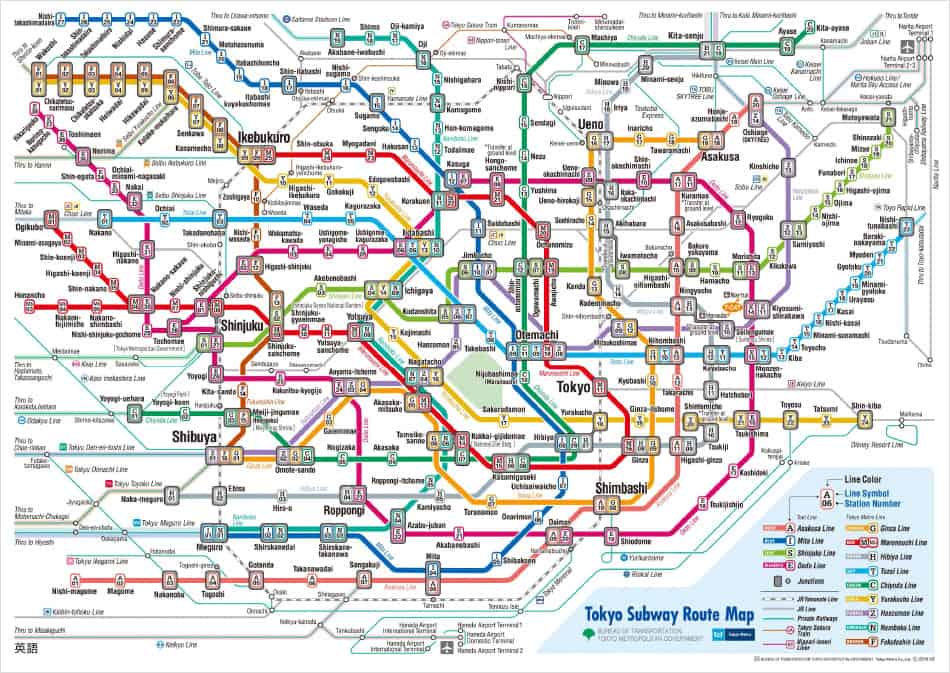
When you think about transit through a major city, I at least think of subways because of what we’re used to in North America. The Tokyo Metro combined with Toei Subway is exactly that.
They’re completely underground and has an extensive number of lines that spider into all corners of the city. This is going to be likely your main mode of transportation because of how good it is.


You can find Tokyo Metro and Toei Subway by looking for the M logo or the green fan.
Think of Tokyo Metro as the precision form of transit that can take you to the very specific corners of the city while the JR line is meant to take you to the major destinations of the city.
All of the others
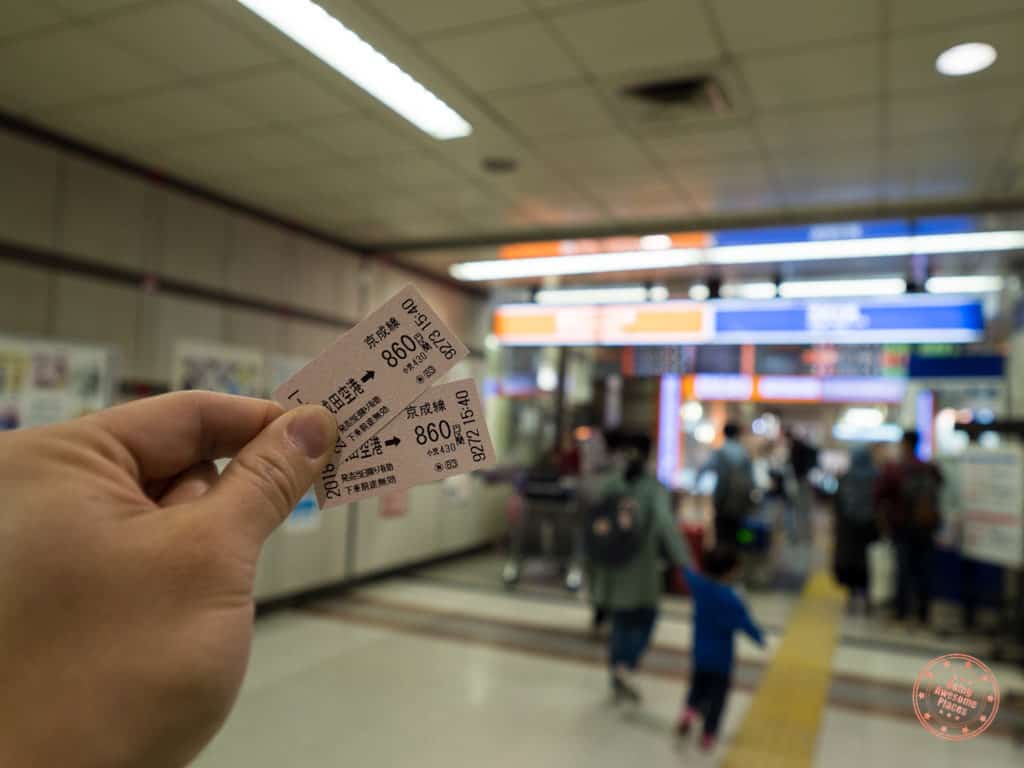
If that wasn’t enough, you then have to throw in all of the regional trains that are owned by a range of companies that all have their own department store.
If you’re just focusing on the best way to get around Tokyo, it’s unlikely you’ll need to take these but if you’re thinking about a day trip up to Tochigi, Kichijoji for street food, Kamakura, or Hakone, you’ll be looking at one of these.
You will find looking at Google Maps sometimes that you’ll see these lines pop up as interesting ways to connect from neighbourhood to neighbourhood which is why it’s worth noting. Just keep in mind that these are owned by different companies and on its own will require a completely different ticket.
- Tokyu Railway – Mainly covers southwestern Tokyo and Kanagawa
- Tobu Railway – Most will take this to get up to Nikko, Saitama, and Tochigi
- Seibu Railway – Serves the Tokyo Tama Region and Saitama
- Keio Railway – Another that serves the Tokyo Tama Region
- Odakyu Railway – You’ll be using this one to head to Kanagawa including Hakone
- Keisei Railway – Serves Chiba and likely what you’ll take to get to and from Narita Airport
- Keikyu Railway – Another that serves Kanagawa and Haneda Airport
- Tsukuba Express – Connectst Akihabara with Tsukuba City, Ibaraki
What makes taking the train so complicated in Tokyo?
What ultimately makes Tokyo transportation so complex is that you can’t just pay for a ticket on say Tokyo Metro and be able to switch to the JR line after with that same ticket. They’re owned by separate companies and as a result, they require different tickets and payment.
This makes things tricky because let’s say you want to buy a 3 day Tokyo Metro and Toei pass but for one of the days, it would be completely more convenient to ride the JR Yamanote circle line but you can’t because you’re “locked in” to Tokyo Metro/Toei.
All of this changes though when you talk about IC cards and the passes that are agnostic to the train company you take.
We recently published a comprehensive guide on wehre to stay in Tokyo to help you figure out which neighbourhood you want to be in for your upcoming trip to Japan.
Where to stay in Tokyo
Best way to get around Tokyo with passes

With all the foundational stuff out of the way, now we can move onto what you’re really here to learn about. What should you buy to get around Tokyo?
Great question. Let’s get started!
IC Cards
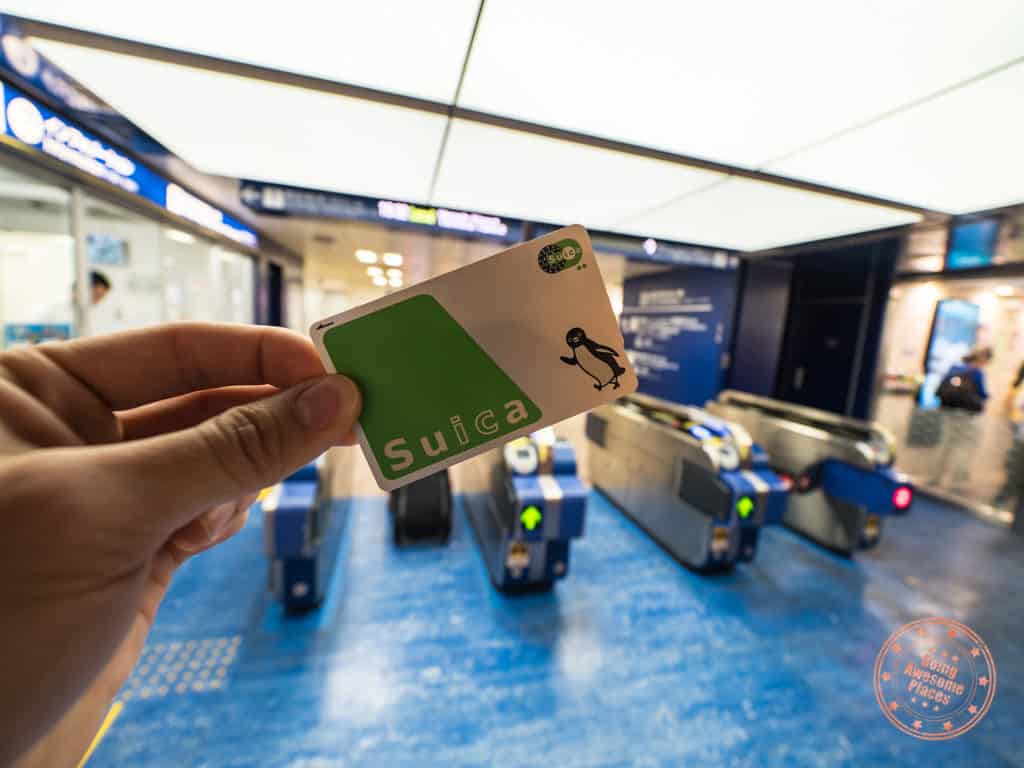
For most visitors, picking up a Suica card at a JR station or a PASMO card at non-JR stations will make the most sense to nullify the complexities I mentioned above.
These are prepaid cards that won’t give you discounts on single tickets but will allow you to freely use all train, subway and bus networks in the city. With a simple swipe of the card, you’ll be able to get around everywhere you need to go. This way, you can also bypass trying to figure out how to use ticket dispensing machines.
You need to pay a refundable deposit of ¥500 to get the card but you can get it back when you return it at a station window. When you run out, simply recharge the card at any ticket machine in ¥1000 increments.
Tourist-specific IC cards
PASMO now sells something called a PASMO Passport that’s only available for tourists. For the price of ¥2000, you get a card that covers the ¥500 deposit and also comes with ¥1500 in prepaid value. You can pick it up at the airport or at specific metro stations. Note that it’s only valid for 28 days.
Suica has something similar with the Welcome Suica where no deposit is needed and is similarly valid for 28 days. The minimum load for a card is ¥1000 but no refunds are offered. In addition to the Tokyo area, the Welcome Suica can be used for certain transportation systems in the Sendai and Niigata, Hokkaido, Tokai, West Japan and Kyushu areas.
Save stress and buy ahead of time
If you’re nervous ahead of your trip and would rather buy an IC card ahead of time, you can have it mailed to you or use a service on Klook to have it ready for pick up at a specific booth at the airport.
Day Passes
If you plan on doing extensive travel on rail lines during a day, you can consider some of the alternative passes but be careful what rail companies they are valid for.
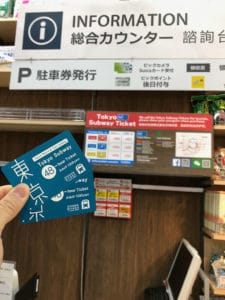
- Tokyo Free Kippu (Tokyo 1-Day Ticket) – Unlimited use of all subway and JR lines but at ¥1590, I personally think it is way overpriced.
- Tokyo Subway Pass – If you don’t need to ride any JR lines, this is going to be the best value out of all these passes. This pass is only sold to foreign visitors at Narita Airport, Haneda Airport, specific metro stations and BIC Camera stores in Tokyo (1 day: ¥800, 2 days: ¥1200, 3 days: ¥1500). Make sure to go to the page to find out all the exact locations.
- Common One-day Ticket for Tokyo Metro and Toei Subway – This pass is identical to the pass above but more expensive (¥900). So why mention it? Well this pass is open for anyone to buy so in a bind you could buy this at any subway station.
- Tokyo Metro Open Ticket – This ticket is limited to the Tokyo Metro line. The one day version is ¥600.
- Airport to Downtown Tokyo Passes – There are a number of combo passes offered at either Narita or Haneda airports that include transportation to the city and then Tokyo Metro passes.
- Toei One-Day Unlimited Pass – The only reason why you’d want to use this one is if you knew you’d be riding the Toei line exclusively in the day but that is unlikely based on my experience. Costs ¥700.
- Tokunai Pass – This pass gives you unlimited access to JR lines only for the day at ¥750.
Does it make sense to get the JR Pass for just Tokyo?
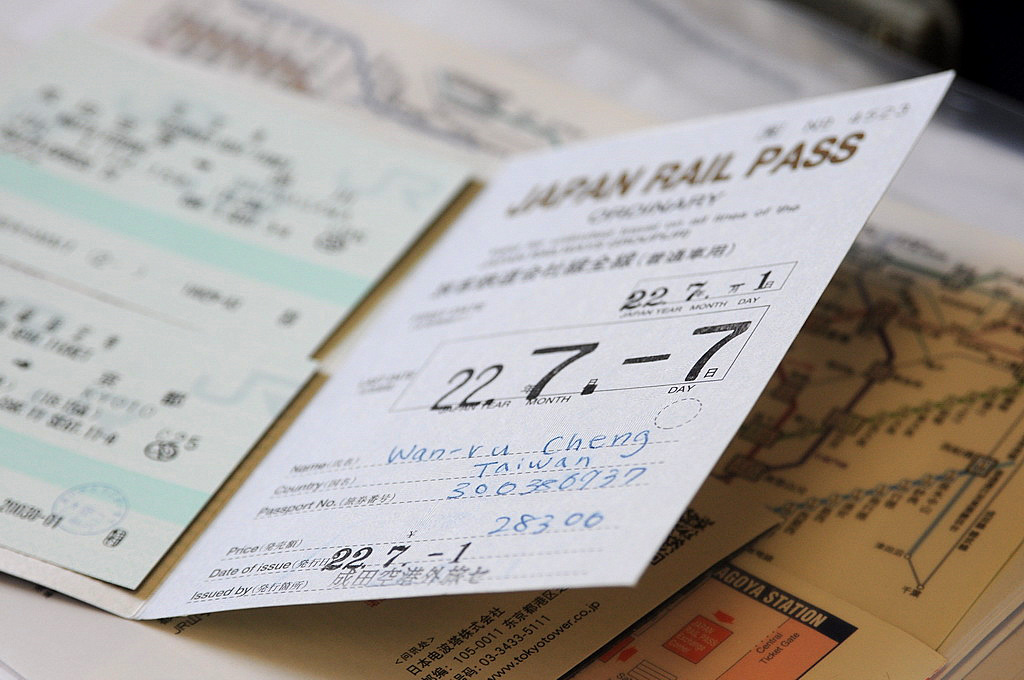
Image via Flickr hanayakakajin
This is a question that probably gets asked the most. The JR Pass is a foreign visitor-only rail pass similar to the Eurail Pass in Europe that gives you unlimited ride privileges on JR specific lines that can be purchased in 7, 14, and 21 day denominations of consecutive use.
From a value perspective, the best use of the JR Pass is when you’re able to use it to take a JR bullet train from city to city. If you’re staying in Tokyo exclusively, it won’t make a heck of a lot of sense just because it would be a lot cheaper to use a prepaid Suica card or one of the passes mentioned above.
My recommendation is to tally up all the trains you’re looking to take by using the Hyperdia tool and see if it makes sense to buy the rail pass. If you do end up deciding on picking up a JR Pass, remember that you can only do it from your home country.
During my original trip to Japan, I planned to visit Osaka, Nara, Hiroshima, and Kyoto. In order to take advantage of the JR Pass, I started the trip by doing 7 consecutive days in these cities and once my pass expired, I spent the remaining 5 days of the trip using a Suica card.
Once you get these basics down you’ll be all set to travel around Japan’s capital city.
Grab your JR Pass before you go
If you’re looking to do any travelling around Japan, I highly recommend picking up a JRailPass. Keep in mind that you’ll need to purchase it before your trip and ship it to your home because you can’t buy it once you’re in Japan.
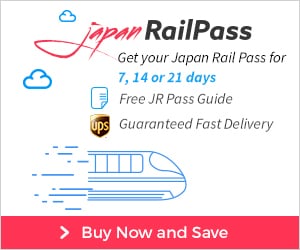
Frequently Asked Questions
Whether it’s the PASMO or Suica, you can use these cards for all JR trains.
If you’re going to be spending over a week in Japan and relying on mostly public transportation, it’s worth investing in an IC card for convenience and peace of mind. Day passes can offer great value in scenarios where you’ll be using the metro heavily in a single day. These also have the advantage of not having to worry about deposit money and topping up but you do have to constantly buy new day passes on the machine.
Yes it’s possible but with careful planning as the lines don’t reach every corner of the city.
The Suica can be purchased in major JR EAST stations at Multifunction Ticket Vending Machines, JR Ticket Offices (Midori-no-madoguchi).
Yes, they can be used in cities such as Kyoto, Osaka, Fukuoka, Nagoya, and others.
The PASMO passport has various special privileges including deals on shopping, experiences, meals, and lodging.
Yes.
For the standard Suica and PASMO cards, you can return the card for a refund of the deposit and remaining balance at specific stations specified by the company (Suica – Tokyo JR East stations, PASMO – Tokyo non-JR subway line stations, or the stations at Narita or Haneda Airports). This can only be done in Tokyo.
For the PASMO Passport specifically, you will not be able to request refund on remaining balance or the deposit of the card.
Yes, both Suica and PASMO cards have a built-in discount but it is very marginal. You’re looking at 1 JPY to 10 JPY discount on a short one-way journey within Tokyo (that’s just a $0.10 USD at most). Ultimately that’s better than nothing as these savings do add up.
With the introduction of tourist-friendly IC cards, the Welcome Suica is the best one since it doesn’t require a deposit. This is important because neither card can be refunded.
Suica is accepted in almost every corner of Japan. One thing you need to know about is that Suica cannot be used for continuous travel between areas. The use of transportation begun in one area must be ended in that area. When crossing from one area to another, first leave the ticket gate and then re-enter.
What you should read next

Jill Schlies says
William, thank you so much for sharing those information. I am quite overwhelmed in planning this first-time experience in Japan to visit my son in Tokyo. He hasn’t done a tremendous amount of travel, not does he pre-plan like I do. Your details are extremy helpful.
William Tang says
I’m glad you found this helpful! Make sure to look around our site for other articles including our 12 day Japan itinerary and the best restaurants in Tokyo.
Ralph Yasuoka says
What is the best way for 5 people with luggage to get from Haneda Airport to Tokyo?
Thank you.
Will Tang says
Hey Ralph! There are a couple of ways to get from Haneda to Tokyo but depending on your budget and experience there you might choose one over the other. 1) You could take the train but it’ll require a transfer in Tokyo so while the cheapest, it may not be for most because of the luggage and needing to be comfortable with the different train companies (Keikyu + Narita Express is one example but there are other more complicated ones where you could save a bit more money). The easiest is probably the limousine bus which comes by regularly. Lastly there are taxis and Uber but those would be the most expensive options.
Michelle Dunner says
Heading back to Tokyo in two weeks so this is very timely. Do any of the passes operate on the Shinkansen trains?
Will Tang says
Hey Michelle,
Unfortunately not. These are strictly for use within Tokyo. If you’re looking to use the Shinkansen trains, you’re better off getting a JR Pass but like I mentioned, I’d probably do your exploring in Tokyo at the beginning or end of the trip so you don’t waste the JR Pass.
Michelle Dunner says
Cheers Will. I didn’t think so, but I wanted to ask someone who had been using the trains much more recently than me!
Gavin says
A very informative post. Having lived there I agree with much you say. On my last visit we used a Japan Rail pass and found it to be great value. I did use it when in Tokyo and found it to save a few pennies. If you tailor it right you could use it to get back to Narita airport if you use the Narita Express. So go on tour, come back and use your final journey from Tokyo back to the airport? I’ve also done some pieces on the bullet train and rail pass in my blog. Great minds think alike?
Will Tang says
Thanks for your comments Navin. Great post on your blog btw!